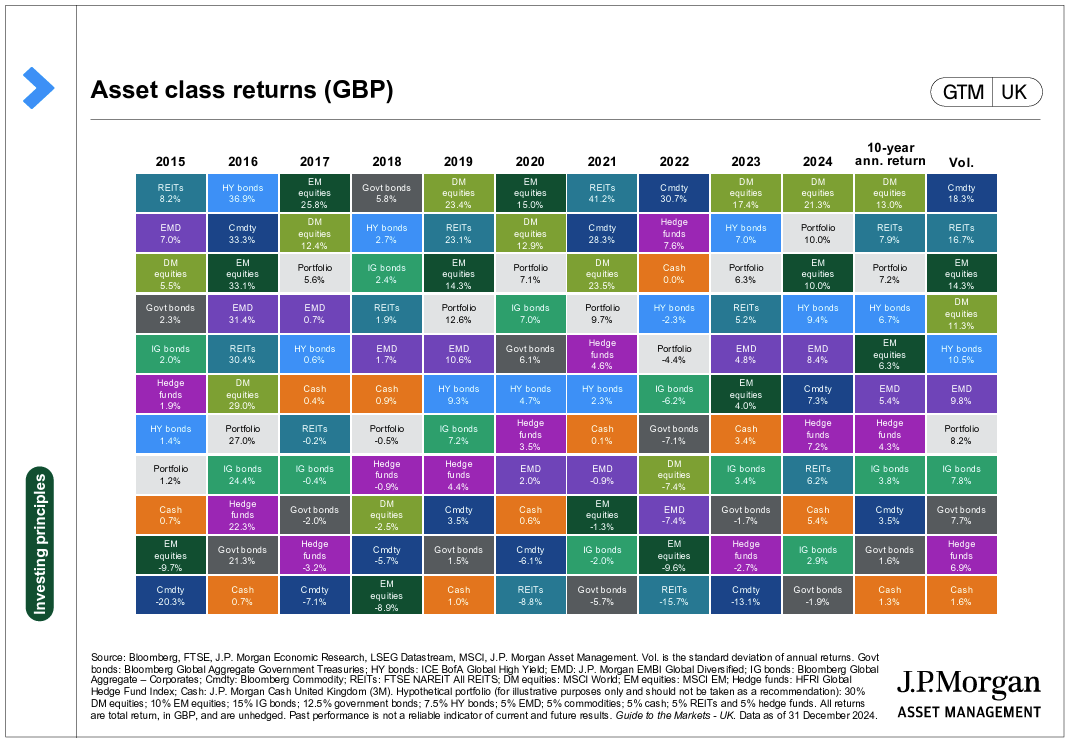
Savings & investment

If you want to build a solid, robust investment portfolio that can withstand market volatility and deliver long-term growth, diversification is a must in building a strong, resilient investment portfolio. Diversification is a key strategy to protect your investments from market volatility and set yourself up for long-term growth.
The secret to achieving lasting success lies in balancing risk and opportunity through a well-diversified approach. Let’s dive into why diversification is essential for your financial future and how you can implement it effectively in your investment strategy.
Diversification involves spreading your investments across various asset classes, industries, and geographical regions. This approach helps reduce risk by ensuring that no single downturn will severely impact your entire portfolio. The core idea is simple: don’t put all your eggs in one basket.
For example, if you only invest in one stock or asset class, like equities, any negative market movement could have a major impact on your wealth. However, by diversifying into multiple asset type such as stocks, bonds, real estate, and commodities, you create a more resilient portfolio. Different assets often perform differently during market changes, ensuring your overall financial health is better protected.
In today’s volatile investment climate, diversification acts as a buffer against unpredictable market shifts. Economic events, government policy changes, or fluctuations in interest rates can all cause specific sectors or asset classes to perform poorly. But a diversified portfolio spreads these risks across various areas.
For instance, when stock markets experience downturns, bonds can provide a stabilising effect. Likewise, investing in international markets or alternative assets like gold can provide a cushion when other parts of your portfolio are underperforming. By spreading your investments, you can weather storms more effectively and minimise the chance of significant financial loss.
While risk management is one of the primary advantages, diversification also plays a pivotal role in maximising long-term returns. By gaining exposure to different asset classes, you increase the likelihood of capturing growth opportunities across sectors.
Consider the following: equities might offer high growth potential but come with more risk, while bonds are less volatile and provide stability. A balanced mix of both allows you to manage risk while still positioning yourself for potential growth. Additionally, as different industries thrive at different times, your diversified portfolio enables you to capitalise on opportunities across the economy. A diversified approach ensures you’re positioned to benefit from multiple sectors’ successes.
The proverbial ‘patchwork quilt’ chart below neatly illustrates the importance of diversification. It shows the returns of various assets classes and that of a representative diversified portfolio over the last 10 years, with the penultimate column being their respective annualised 10-year returns.
There is huge variation in winners and losers in any discrete year, but interestingly the well-diversified portfolio, including stocks, bonds and some other asset classes, has returned around 7% per year over this time period. While the risk of loss is still an unavoidable part of investing, the diversified portfolio has also provided a much smoother ride for investors than investing in equities alone, as shown by its position in the chart’s volatility column

A diversified investment strategy must be tailored to each individual’s financial goals, time horizon, and risk tolerance. Every investor’s situation is different. What works for one person may not work for another. Some may prefer a more aggressive investment strategy with a focus on equities, while others might want greater stability with more bonds or cash.
Regular portfolio reviews and adjustments are crucial for staying on track toward your financial goals. Major life events, such as changes in income, family obligations, or retirement plans, may require modifications to your portfolio’s allocation. This is where professional advice becomes invaluable.
So, the key things to remember are :
Diversification isn’t just a buzzword; it’s a critical strategy for managing risk and achieving financial success over the long term. By diversifying your investments across various asset classes, sectors, and geographical regions, you create a more resilient portfolio while increasing the likelihood of growth.
If you’re unsure whether your portfolio is well-diversified, or if you need guidance on creating a strategy that aligns with your financial goals, don’t hesitate to reach out for professional advice. As your trusted independent financial adviser, Fairstone is here to help you create a portfolio that can stand the test of time and help you reach your financial aspirations.
Remember, the secret to successful investing is not just about identifying the right opportunities it’s about ensuring that your portfolio is strategically designed to navigate the inevitable ups and downs of the market. Diversification is the proven strategy that can help you do just that!
THE VALUE OF YOUR INVESTMENTS (AND ANY INCOME FROM THEM) CAN GO DOWN AS WELL AS UP, WHICH WOULD HAVE AN IMPACT ON THE LEVEL OF PENSION BENEFITS AVAILABLE.